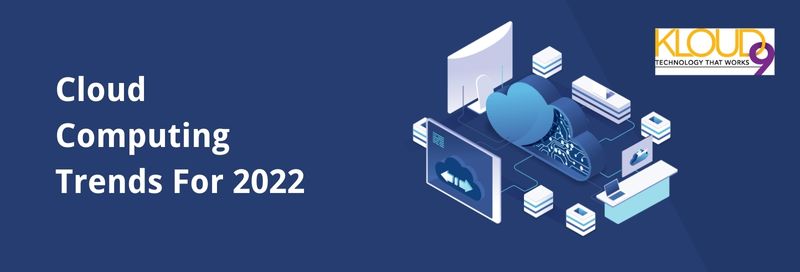Cloud computing has already changed the operations and functions of business, but the cloud's disruptive consequences are far from done. Trends in 2022 show that firms will continue to embrace the cloud to update operations and extend IT capabilities, indicating that fast acceptance and expansion will continue. This article examines the cloud computing trends for the IT industry in 2022.
All the trends discussed below will influence the current year. The information provided in this article is critical for remaining competitive in the ever-changing world of cloud computing.
#1 Edge Computing:
Edge computing is a different technique for processing and storing data in the cloud. It is a new cloud trend that includes constructing localized data centers for computing and storage near where the data is collected, rather than at a central site hundreds of miles away.
This type of decentralized computing infrastructure aids in the reduction of latency concerns and the enhancement of application performance. Because the data and resources are closer to the end user's device, they may be processed locally, saving companies money.
Sometimes people misinterpret Edge computing as a threat to cloud computing, although the two are mutually beneficial.
Edge computing is employed for time-sensitive data. You can use cloud computing for data that is not time-sensitive. The edge computing sector is now one of the most touted and will grow more next year.
It provides evident benefits in increased data processing speed, low to no latency, excellent connection, security, privacy protection, and reduced data amounts transferred. It will be a fantastic facilitator for businesses seeking operational efficiency.
By cloud standards, serverless computing has been around for a while now. All the cloud computing industry bigwigs are now giving it more weight.
#2 Serverless Features:
It guarantees a pay-as-you-go system that enables businesses to only pay for the services they really utilize. In this approach, the infrastructure may adapt silently to the needs of an application without requiring a massive financial outlay.
Additionally, serverless computing offers secure sandboxes for businesses to use when implementing their code, reducing the possibility of back-end failures. In the upcoming years, new user experiences will be influenced by serverless within the cloud.
#3 AI in Cloud Computing:
Artificial intelligence and cloud computing work hand in hand.
The latter fuels the former to deliver AI services.
By making AI more accessible to a larger audience of users, cloud services also contribute to its democratization. It enables smaller firms to access sophisticated machine learning capabilities and offers them access to commercial services boosted by AI.
Businesses may maximize the benefits of both technologies while saving money by combining AI and cloud services. While the cloud offers ongoing safety, recovery, and data backup in a virtual environment, AI helps the cloud manage data and gather insights.
#4 Multi-Cloud Infrastructure & Hybrid Cloud:
Hybrid services focus on integrating their strengths rather than compromising between different techniques. Store the highly sensitive data on private servers with monitored access. Besides, you can preserve the frequently accessed material on public servers.
A hybrid approach that is well-integrated and well-balanced offers firms the best of both worlds. Most businesses are now aiming to fully enjoy the cloud experience after moving part of their workloads from on-premises to a single cloud vendor. As a result, they have to deal with settings that employ several clouds and services from various vendors. The multi-cloud approach aids businesses in selecting the many cloud services most suited to their unique application environments, business demands, and availability requirements.
In the future, more businesses will have to create wholly cloud-native apps with little to no architectural reliance on any cloud provider. According to experts, multi-cloud strategies and hybrid-cloud features are adopted as the norm in major companies, in 2022, more business executives and businesses will see the benefits of these models and embrace them to benefit from elasticity and agility in the cloud.
Summary:
In recent years, the cloud has emerged as one of the most significant technology victors. It evolved into a trend that promotes creativity and a standard that allows for flexibility and cost savings. And, with cloud services continuing to be important in practically all corporate processes, there is little doubt that the cloud is the future. As a result, new cloud-native trends will undoubtedly develop in this vast digital world of diverse and dynamic design.





You must be logged in to post a comment.